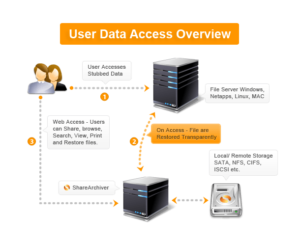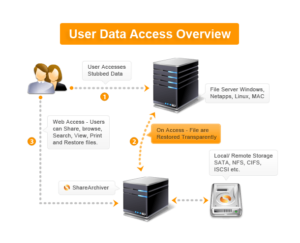
Today’s organizations are drowning in data. In order to make sense of what they have, ensure that their data is safe, and operate in a way that is both efficient and cost-effective, it is essential to establish a comprehensive system of file archiving. File system archiving can be done either manually or automatically, with manual arching representing a time-consuming, labor-intensive process of creating a backup or copy of data from a production server and then relocating it to tape or some other low-cost type of storage. The original file is then erased from the production storage in order to free up space for new data. This system is outdated: even small to medium-sized businesses can take advantage of an automated system that gives structure to their file archiving system and reduces time and expense.

Though the idea of implementing an automated File Server Archiving system may sound complex, at its best the system will be virtually invisible to the end user while freeing up those who had once been responsible for manual transfers and replacing outdated tape storage with less expensive alternatives. The system operates via a software application that is often integrated into a program that takes over the responsibility for running daily backups. The software follows policies that are set in place by whoever is responsible for the administration of the system and can be monitored and updated as needed based on business and compliance needs. Files are automatically archived when they meet the established criteria, while still being available to users via a stub file that is left behind in the original location.
Stub files are essentially placed holders for the original file and serve as links to the data’s new location on secondary storage. When the user clicks on the stub file, it automatically retrieves the file and provides it to the user with no detectable delay. This is a tremendous improvement over having to retrieve files from tape or backup, as was previously required when an archived file needed to be accessed.
Organizations are able to set their file system archiving policies based upon whatever parameters work best for them and can be changed as needed. ShareArchiver’s file system archiving offers the opportunity to significantly reduce the amount of primary storage being used by low priority files, reducing costs and improving efficiency and productivity. Call our office today to see how our system will work for your organization.













